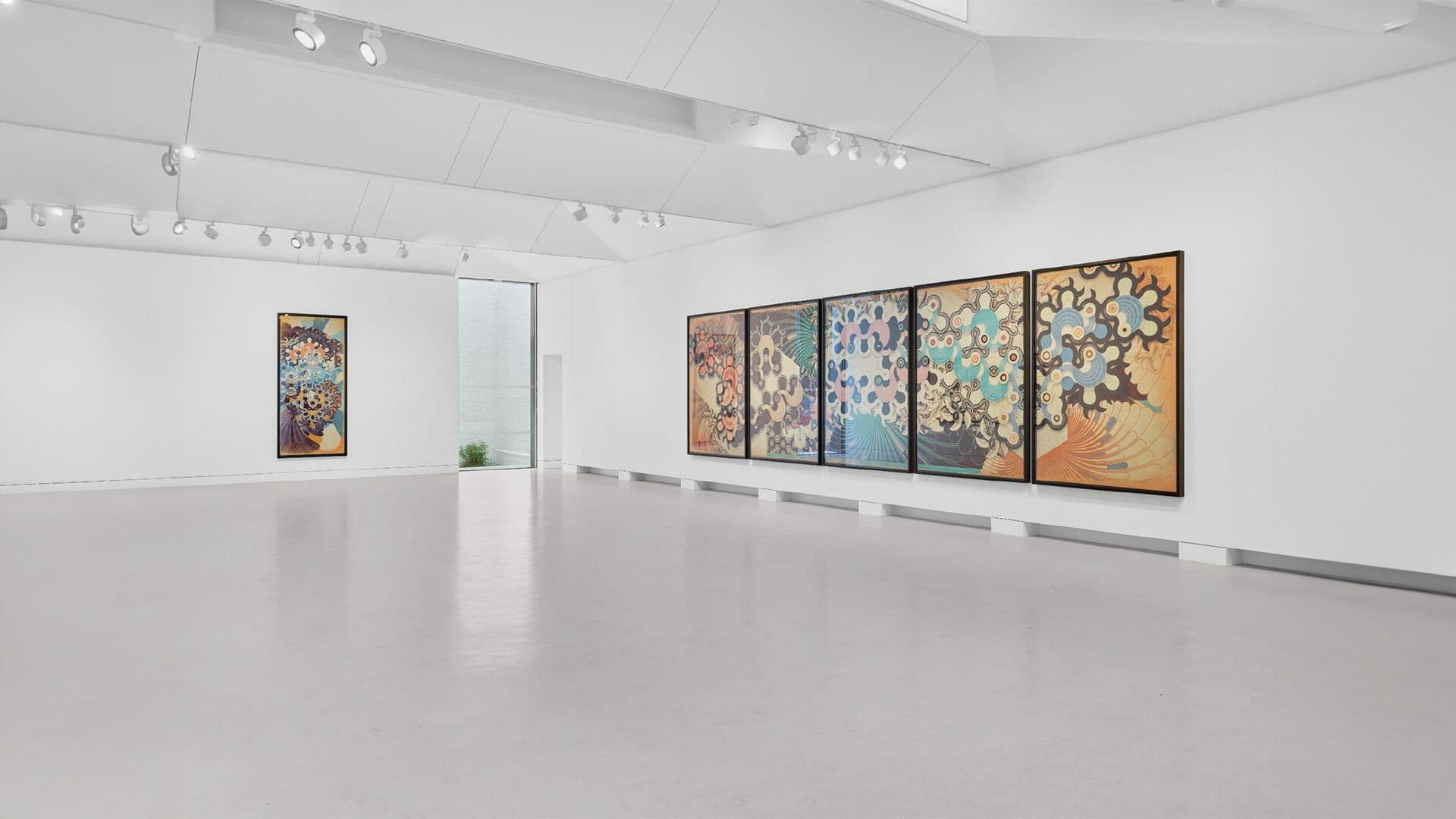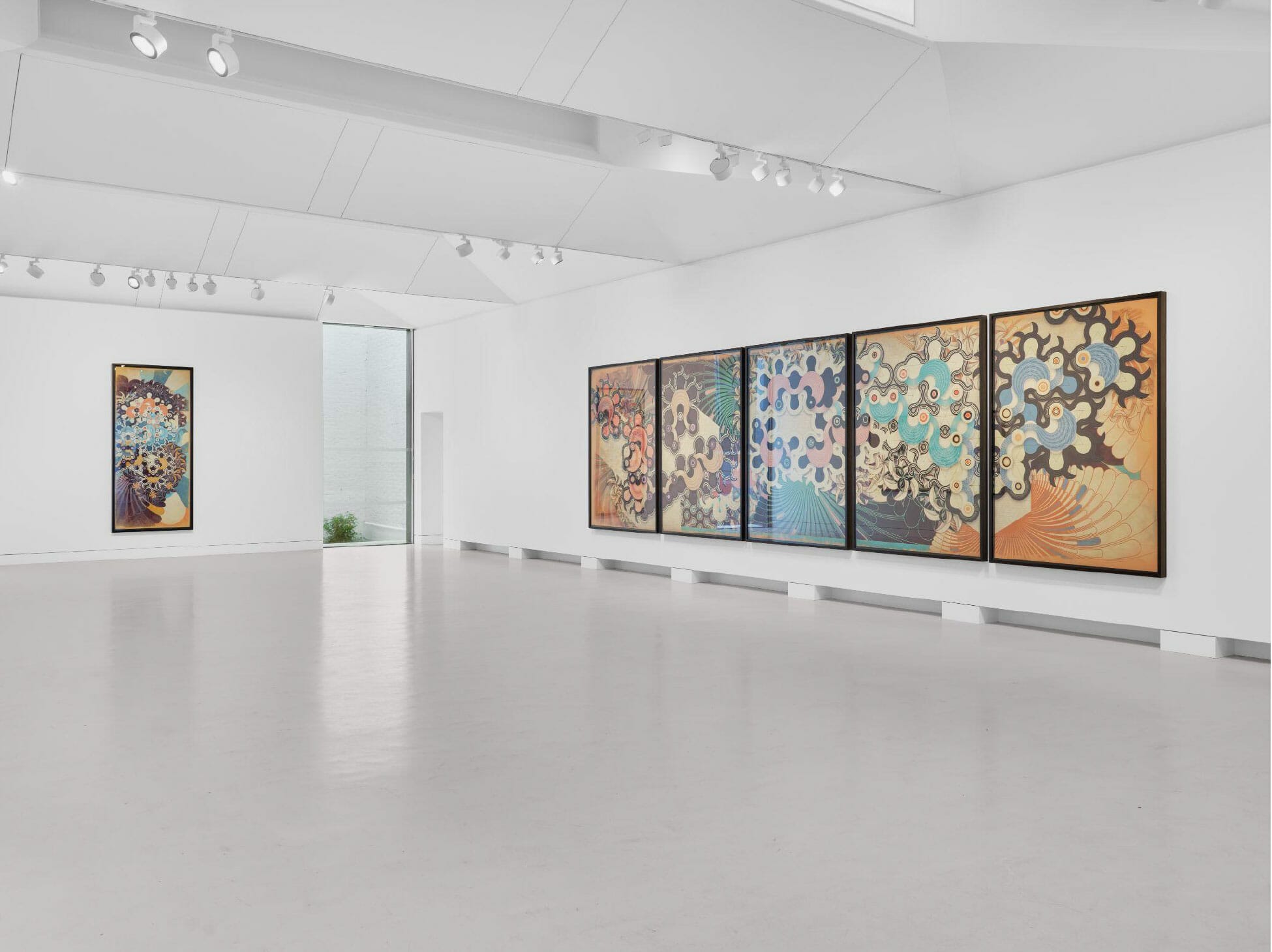
On co-curation and co-creation
“Collectors co-creation” has sometimes been co-opted for superficial engagement in the NFT space. Harvey Rayner’s Quasi Dragon Studies (QDS) project stands as a stark contrast. Unlike the often misleading portrayal that reduces co-creation to simply using a hash from the blockchain to feed as a seed in the algorithm, QDS delves deep into the essence of collaborative artistry. While the common approach might give the illusion of participation, it merely scratches the surface of true engagement. Harvey Rayner introduces a groundbreaking project that places the power of co-creation directly into the hands of art collectors. Quasi Dragon Studies is a visionary experiment that not only harnesses the potential of generative art and blockchain technology but fundamentally challenges the way art is conceived, appreciated, and cultivated.

At its core, QDS is an ode to the co-creative process, transcending the conventional artist-viewer relationship. Harvey Rayner’s project not only leverages the advancements of the web3 era but ingeniously reimagines the very fabric of art by engaging collectors as co-curators. The project places the spotlight on co-curation, catalyzing a dynamic fusion of experimentation, dialogue, and creative risk-taking. It pushes beyond the confines of mere spectatorship and invites the audience to become active participants in the artistic journey. The heart of QDS lies in the creation of generative artworks – those born from algorithmic manipulation and artistic ingenuity. But it’s not just about algorithms and code; it’s about people, interactions, and passion. It’s about igniting discussions, and sparking emotions. Harvey Rayner has brilliantly harnessed the potential of the Composite Builder, a custom-built tool that allows collectors to contribute their unique artistic touch to the final generative process. This tool, far from being a mere gimmick, forms the crux of the project’s participatory nature.

Collectors are given two distinct ways to engage with the project. They can either immerse themselves in the creative playground, guided by their artistic instincts, or delve into the meticulous process of crafting limited edition Black and White Dragons – intricate compositions that demand a deliberate investment of time, energy, and resources. This duality of participation embodies the project’s underlying question: What incentive resonates more profoundly with the community – the raw act of creation or the allure of quantifiable rarity in the web3 art landscape?
Harvey Rayner’s QDS is not just a fleeting experiment; it’s a profound exploration of the evolving role of artists and collectors in the digital age. The project’s fundamental design principles and technical intricacies demonstrate the artist’s commitment to fostering a genuinely inclusive art ecosystem. Tiles, the building blocks of QDS, are more than pixels and colors. They are gateways to limitless creativity, each bearing unique traits for joining in the Composite Builder. Tiles serve as the common language through which art collectors communicate their curatorial choices, constructing composites that reflect their artistic visions. This act of co-curation culminates in the creation of new artworks, wherein the interplay of tiles and blanks, open and closed edges, brings to life a tapestry of visual narratives.

The concept of Black and White Dragons introduces an additional layer of rarity and complexity to the project. These dragons, not literal beings but intricate compositional arrangements, stand as a testament to the project’s multifaceted nature. As collectors meet stringent joining conditions, they bring forth works that are not only visually striking but also serve as milestones in the co-creative journey. QDS is more than the sum of its technological parts; it’s a vision for the future of art. It inspires us to envision a world where artistic collaborations transcend geographical boundaries, where art bridges cultures and communities. As the project evolves, it might herald the emergence of a new kind of art – one that binds individuals in shared creative endeavors.In the words of Jamie Gourlay from Verse, “Maybe it becomes a step towards making art more ‘for everyone’. Maybe in a few years kids at the Tate in London find themselves participating in an artwork with kids in Nairobi. Maybe there’s a kind of art, yet to come into existence that really brings people together.” Harvey Rayner’s QDS serves as an invitation to explore the intersection of technology, art, and human connection. It’s a grand experiment that challenges the very essence of art creation and appreciation. As we witness the emergence of this decentralized approach to artistry, we’re reminded that the future of art lies not just in the hands of artists but in the collective spirit of those who are willing to venture into new creative territories.

In Quasi Dragon Studies, co-creation goes beyond a mere seed; it embodies a dynamic exchange between artist and collector, where choices, decisions, and visions converge to shape the very fabric of generative art. This project challenges the status quo and redefines co-creation in a way that is thought-provoking, immersive, and authentic, reawakening the essence of art as a collaborative and transformative endeavor.
Mimi Nguyen
Creative Director at verse.works and Assistant Professor at Central Saint Martins, University of Arts London. Her research on creativity and human-computer interaction has been published by Cambridge University Press, Design Research Society and TIME Magazine.
You may also like
On animated architecture at Soft Power, Berlin
On animated architecture by Maija Fox, Jakob Francisco, Dongchan Kim, Nina Nowak, Esteban Pérez, an
11 QUESTIONS – Federica Francesconi
Alejandro Javaloyas asks 11 questions to an abstract artist about their work and inspiration. Introd
Thomas Scheibitz, >>>X<<< at TICK TACK, Antwerpen
>>>X<<< by Thomas Scheibitz, curated by TICK TACK, at TICK TACK, Antwerpen, 14/02/




